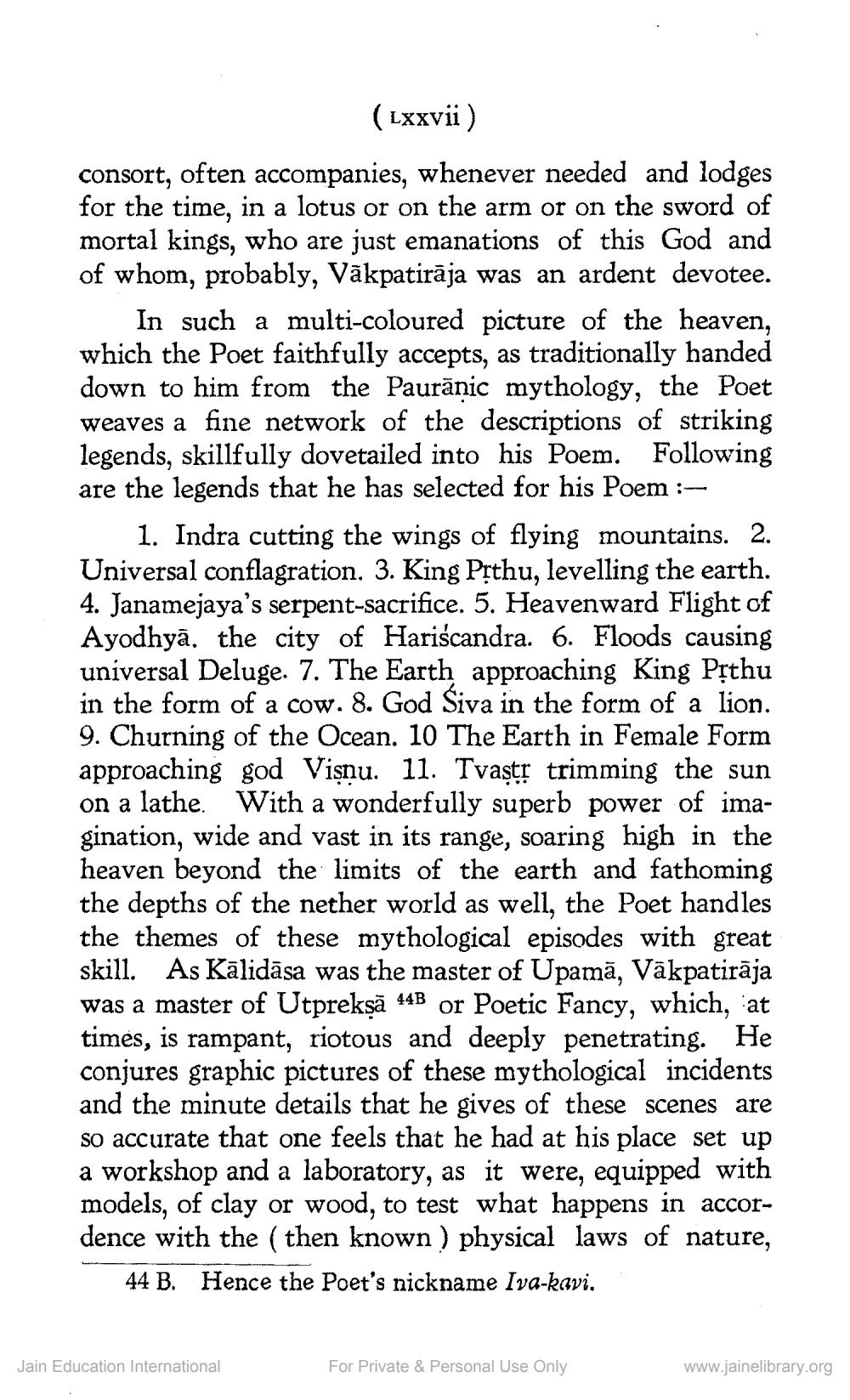________________
(Lxxvii) consort, often accompanies, whenever needed and lodges for the time, in a lotus or on the arm or on the sword of mortal kings, who are just emanations of this God and of whom, probably, Vākpatirāja was an ardent devotee.
In such a multi-coloured picture of the heaven, which the Poet faithfully accepts, as traditionally handed down to him from the Paurānic mythology, the Poet weaves a fine network of the descriptions of striking legends, skillfully dovetailed into his Poem. Following are the legends that he has selected for his Poem :
1. Indra cutting the wings of flying mountains. 2. Universal conflagration. 3. King Pșthu, levelling the earth. 4. Janamejaya's serpent-sacrifice. 5. Heavenward Flight of Ayodhyā. the city of Hariscandra. 6. Floods causing universal Deluge. 7. The Earth approaching King Pộthu in the form of a cow. 8. God Siva in the form of a lion. 9. Churning of the Ocean. 10 The Earth in Female Form approaching god Vişnu. 11. Tvaşts trimming the sun on a lathe. With a wonderfully superb power of imagination, wide and vast in its range, soaring high in the heaven beyond the limits of the earth and fathoming the depths of the nether world as well, the Poet handles the themes of these mythological episodes with great skill. As Kālidāsa was the master of Upamā, Vākpatirāja was a master of Utpreksā 44B or Poetic Fancy, which, at times, is rampant, riotous and deeply penetrating. He conjures graphic pictures of these mythological incidents and the minute details that he gives of these scenes are so accurate that one feels that he had at his place set up a workshop and a laboratory, as it were, equipped with models, of clay or wood, to test what happens in accordence with the ( then known ) physical laws of nature,
44 B. Hence the Poet's nickname Iva-kavi.
Jain Education International
For Private & Personal Use Only
www.jainelibrary.org




